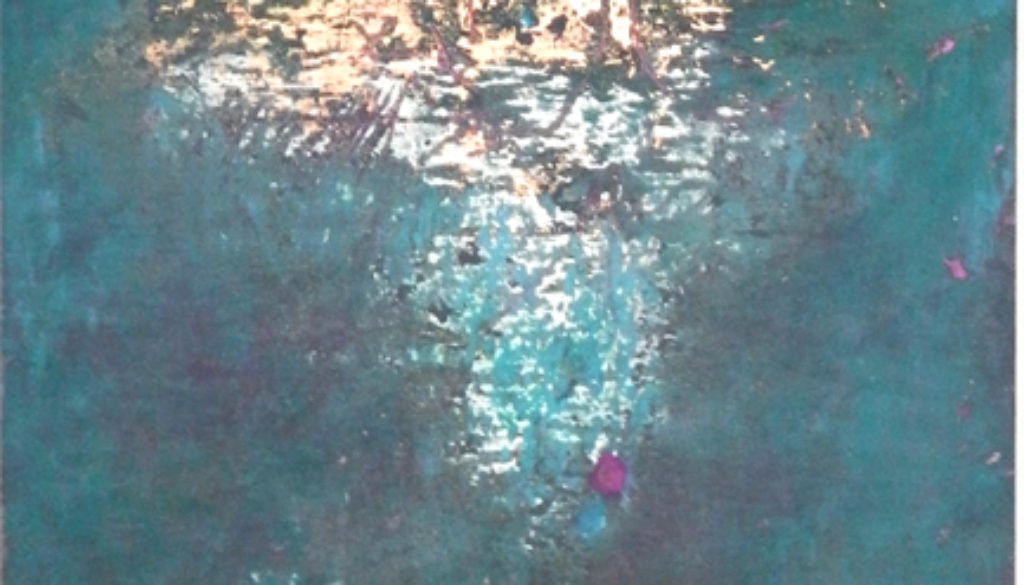“In the capable hands of Bernard Fox the music bathes the audience in sound that is full rather than merely loud, sound that is experienced physically without being overwhelming…a clear and compelling emotional experience.”
Donald Westwood, OPERA NEWS – Noa Ain’s “Joan Of Arc”
Full text:
Obie and Sondheim Award-winning composer Noa Ain’s Joan of Arc — a seventy minute quasi opera featuring one singer, soprano Trudy Ellen Craney, and a recorded soundscape of music, voices and atmospheric sounds — is a brilliantly conceived experience. In the composer’s words. “I wanted to create a piece that was not theater, not concert, but would feel as if Joan had manifested at this Easter season [world premiere April 30], had come to this sacred space, for this hour, to remember (with us as witnesses) the events that led to her death at the stake.” This composition strips away the romantic distortions encrusting the Joan story. Ain gives one a sense of Joan as she really may have existed — a complex human being, responsive to her “voices,” angry, frustrated and confused. As Joan speaks, the listener identifies with her, and the physical and emotional experiences of her trial and execution become clear and compelling.
To accomplish her purpose, Ain opted for an intelligent blend of tradition and innovation. Stylistically, the score is reminiscent of Kitaro and other contemporary composer/arrangers who feature a layering and texturing of sounds in a linear context. Sung in French, the language of the story’s locale, the vocal line for the soloist is extremely demanding. Innovations include a massive surround-sound system that succeeds in making music without making an intrusive media statement. In the capable hands of sound designer Bernard Fox. Ain’s music, orchestrated by Andy Brick, bathes the audience in sound that is full rather than merely loud, sound that is experienced physically without being overwhelming.
The recorded material for the premiere was played back from a RADAR system (twenty-four bit, twenty four track) on twenty full-range, processed speakers and four sub-woofers. The speakers, in two groups of eight, were arranged as four high (twenty-two feet in the air) and four low (seven feet in the air), on either side of the hall, plus two at each end, allowing the audience to experience the sound as though sitting in the “sweetspot” between a pair of stereo speakers. A small amount of electronic reverberation was added to create a cathedral ambience.
The collaborators chose the Angel Orensantz Foundation, a former synagogue on Manhattan’s Lower East Side, for this premiere. The atmosphere of the sanctuary performance space evoked a universal spiritual response, with the added benefit of resembling the sort of medieval room in which a trial might have taken place. Whether by design or by chance, the late-afternoon time chosen for the performance proved ideal, with changes in light filtering through the old windows adding to the ambience.
A special work demands a special soloist, and Craney was the right artist, giving a riveting performance as Joan. Craney’s youthful lyric soprano made Joan’s utterances seem like a natural extension of speech. At times, she moved through the capacity audience, seeming to float from point to point, engaging individual audience members as one might wish to confront a judge or witness. It is difficult to imagine a more effective singing actress in the role.
The trial and execution of Joan of Arc in the fifteenth century — an ugly political undertaking — was the last major event of the Inquisition in France. The victimization of Joan at the hands of the authorities is a vivid reminder of the dangers of power and the wisdom of separating church and state. In this skillfully crafted, moving new musical retelling, Ain affirms the story’s importance from Joan’s perspective, creating a human experience rather than a legend.
DONALD WESTWOOD



